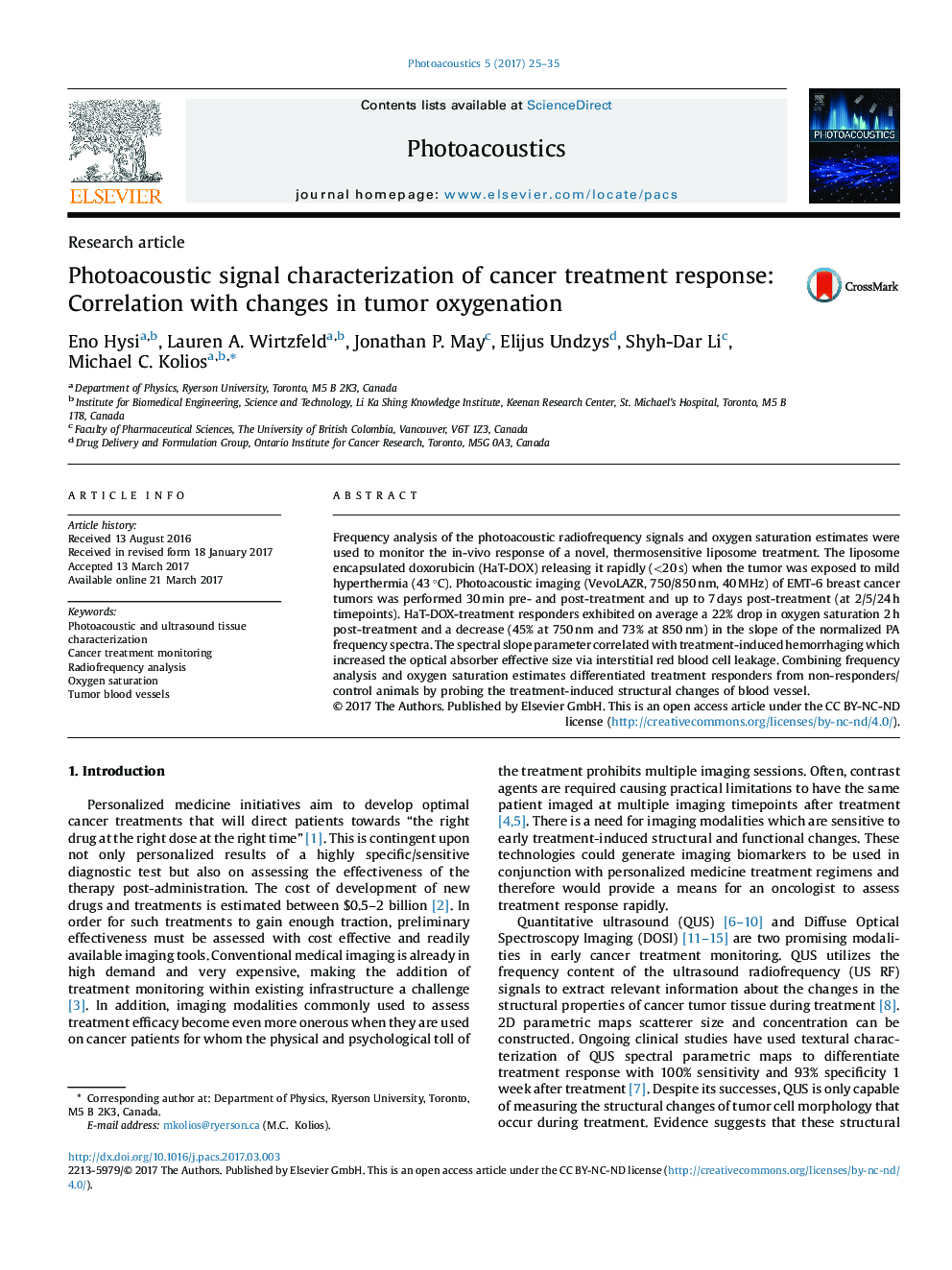| Article ID | Journal | Published Year | Pages | File Type |
|---|---|---|---|---|
| 4977323 | Photoacoustics | 2017 | 11 Pages |
Frequency analysis of the photoacoustic radiofrequency signals and oxygen saturation estimates were used to monitor the in-vivo response of a novel, thermosensitive liposome treatment. The liposome encapsulated doxorubicin (HaT-DOX) releasing it rapidly (<20 s) when the tumor was exposed to mild hyperthermia (43 °C). Photoacoustic imaging (VevoLAZR, 750/850 nm, 40 MHz) of EMT-6 breast cancer tumors was performed 30 min pre- and post-treatment and up to 7 days post-treatment (at 2/5/24 h timepoints). HaT-DOX-treatment responders exhibited on average a 22% drop in oxygen saturation 2 h post-treatment and a decrease (45% at 750 nm and 73% at 850 nm) in the slope of the normalized PA frequency spectra. The spectral slope parameter correlated with treatment-induced hemorrhaging which increased the optical absorber effective size via interstitial red blood cell leakage. Combining frequency analysis and oxygen saturation estimates differentiated treatment responders from non-responders/control animals by probing the treatment-induced structural changes of blood vessel.
